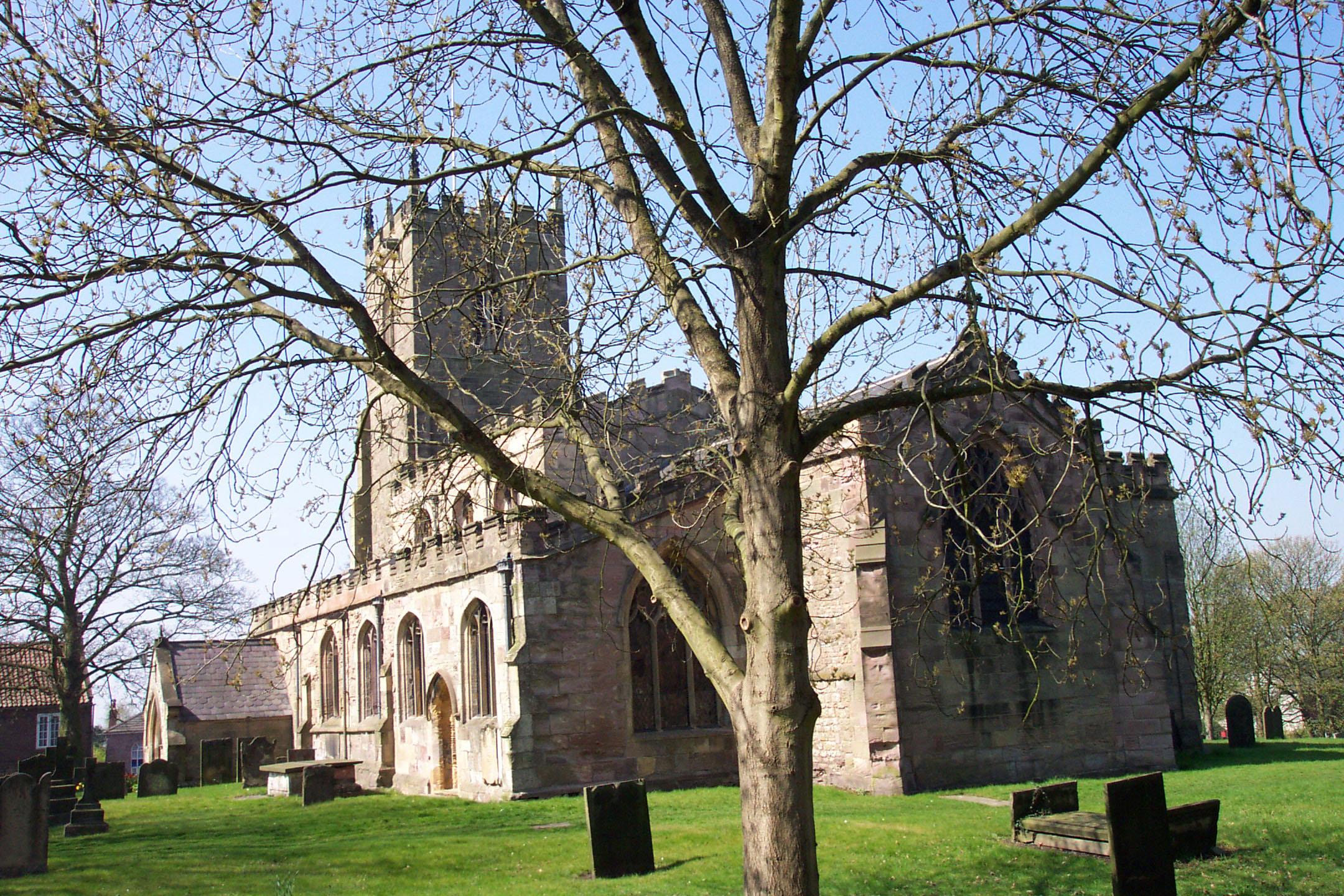St John the Baptist
Wales, Yorkshire
This lovely church, has been a place where worship has been offered to God for over 1000 years, with the original Norman church constructed during the reign of Henry I (d 1135).

All Hallows church, grade I listed, is a focal point in the pretty village of Harthill.
Harthill, Yorkshire
The exterior has wonderful examples of architecture between the 12th and 16th centuries and inside can be seen exquisite Italian wooden carvings, a large chancel with marble floors, beautiful stained glass windows and the tomb of the 1st Duke of Leeds. The large peaceful churchyard contains many ancient monuments and the 17th century Old Schoolroom is adjacent.
Walk around the outside of the church to see the architecture. The original Norman church was widened by adding side chapels and aisles and raised in height during the next 200 years. The tower was raised in height in the 15th century. Looking up, you can see the ancient gargoyles and dripstone heads.
Inside the door is the ancient font. The wooden Jacobean cover, for safety reasons is now positioned in the Leeds chapel. Nearby is a scratch dial (an early sundial), and an ancient stoup.
At the end of the nave see the original rounded Norman arches on the left, whilst the south side has more recent pointed arches. Looking up, the stonework changes where the roof was raised and upper clerestory windows were added. The wooden roof has carved bosses of flowers and grotesque faces.
One of the beautiful stained glass windows is attributed to the Florentine master, Ulisse De Matteis.
Before the Leeds (north) chapel is the tomb of Sir Hugh de Serlby, Lord of the Manor who died in 1298. In the Leeds chapel is a monument to Sir Edward Osborne who fought for King Charles I. His gauntlets are on display. His son Thomas, another powerful politician, became 1st Duke of Leeds after involvement in the revolution of 1688. He restored the chapel and built a family crypt beneath it. His tomb lies within the chapel. The organ workings, sadly, obscure much of this chapel.
The pulpit, lectern and altar front show exquisite wooden carvings and are inscribed Carlo Scarcelli 1886. The chancel is as long as the nave and has imported marble flooring with choir stalls of Canadian walnut installed during the restoration work in the 1890s. The roof timbers were also replaced and some ancient features uncovered including two aumbries behind the altar, a lancet window, an Easter sepulchre and piscinas.
The south chapel was renamed St George’s after the two World Wars. There is a lovely east window. The priest’s door was added in Victorian times. The 16th century metal gates probably came from nearby Kiveton Hall.
Wales, Yorkshire
This lovely church, has been a place where worship has been offered to God for over 1000 years, with the original Norman church constructed during the reign of Henry I (d 1135).
Thorpe Salvin, Yorkshire
The nave of the church dates from 1130 when Roger de Busli of Tickhill was Lord of the Manor, the village takes its name from Ralph Salvain, a knight who lived here in 1284.
Todwick, Yorkshire
Step back in time at this unique and beautiful village church, almost certainly built in Anglo Saxon times, during the early 11th century and this building forms the nave of the current church.